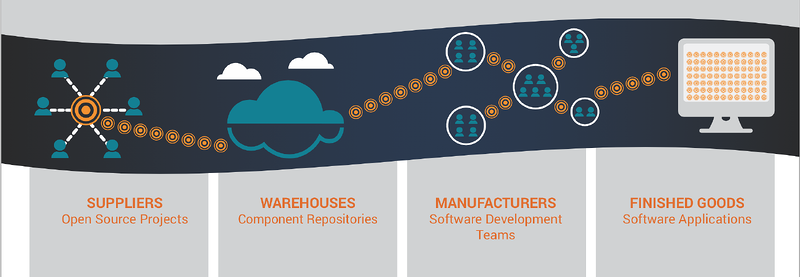In April of this year, I embarked on a six-week journey diving deep into an analysis of the world’s software supply chains. I evaluated the practices of 106,000 organizations, the 100,000+ suppliers they relied on, and the billions of software components that fueled their agile, continuous delivery and DevOps practices.
The facts I discovered and share in the 2015 State of the Software Supply Chain Report: Hidden Speed Bumps on the Road to Continuous, fundamentally changed the way I thought about software (and about DevOps). Pre-register for the full release of the report. coming out on Tuesday, June 16.
The volume and velocity of consumption, the variety of parts and suppliers, and the impact on innovation and quality astounded me. Early reviewers of the report including Gene Kim (co-author of the Phoenix project), Gareth Rushgrove (Puppet Labs and DevOps Weekly newsletter), Nick Galbreath(Signal Sciences), and Nigel Simpson (Fortune 100 Entertainment and Media company) agreed.
My aim for this research is not simply to present facts about the global software ecosystem. I’m aiming to point a spotlight on software supply chain best practices within across a variety of industries that could be used as new benchmarks for software supply chain automation. Similar to manufacturing of auto, pharmaceutical, healthcare, or defense systems, the effective management of supply chains will create winners and losers. I’ll share evidence that the best, high-performance software development organizations are benefiting from:
- Working with fewer and better suppliers
- Relying on the highest quality supplies from those suppliers
- Maintaining traceability and visibility throughout the software supply chain for prompt and agile recall
Key Points from the Study
In the best organizations, the research revealed developer net productivity increasing by up to 40%. Just imagine applying that time to more innovation, rather than to rework and maintenance efforts.
At the same time, the report touches on inefficiencies and complexities that are creating a huge drag on the velocity software development teams are aiming to achieve. A lack of discipline, focus, and visibility around the software supply chain has resulted in mountains of technical debt, unnecessarily context switching, and outdated sourcing methods that wasted over 3.3 million build days last year alone.
Hightlight: Automation Across the Software Supply Chain
The other key insight from this research is the clear need for further automation across software supply chains. With individual organizations consuming hundreds of thousands and sometimes millions of software components annually, it became obvious that waterfall-centric approaches to identifying the most functional parts, checking quality, validating appropriate licenses, or evaluating security vulnerabilities could not keep pace. Sourcing practices that regularly go unchecked have also resulted in the use of severely outdated software components, even numerous versions of the same component part.
Download the Full Report
Over the next few weeks, I will publish excerpts of findings and best practices identified in the 2015 State of the Software Supply Chain Report and invite you to read along. Or you can access the full report now through this link.









